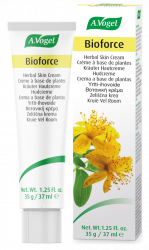An introduction to rosacea
Rosacea is a chronic skin condition that is characterised by a fluctuating intensity of symptoms, with noticeable periods where symptoms are inflamed or when the severity recedes. Symptoms are likely to become more agitated if they are left untreated and the affliction can occur alongside other skin conditions such as seborrheic dermatitis.
The condition is estimated to affect up to one in ten but a diagnosis can be difficult to achieve as rosacea has no definitive or known cause.1 However, there are a number of theories about the illness which we shall explore but first it is helpful to identify the primary subtypes.
There are four common variants of rosacea:
- Erythematotelangiectatic rosacea
- Papulopustular rosacea
- Phymatous rosacea
- Ocular rosacea
Each variant can be characterised by the symptoms produced; for example in papulopustular rosacea sufferers experience an inflamed red rash classified as ‘plaques.’
The different types of rosacea do not always require individualised treatment, but it can be useful to understand the form of rosacea that is affecting you, so that you can anticipate your symptoms and take preventative measures.
1http://www.nhs.uk/conditions/Rosacea/Pages/Introduction.aspx
Dermodex mite
Although the connection between rosacea and the demodex mite has not been confirmed, a number of studies have suggested that the mite could be linked to rosacea, as sufferers of the condition can sometimes have over four times the amount of mites on their facial skin compared to the rest of the population.2
Demodex is a tiny mite that lives on your skin. In small amounts, this mite is usually harmless but if it is given the optimum conditions to grow, it can cause a number of problems for your skin. This is because the mite feeds of sebum oil and other properties of the skin, often causing irritation and dryness, triggering a response from your immune system.
2https://www.rosacea.org/rr/2015/summer/article_2.php
H. Pylori bacteria
Helicobacter pylori bacteria are often found in your gut. This bacterium can weaken the lining of your gut and decrease the levels of acid in your stomach by influencing the hormone gastrin.3
Gastrin is usually responsible for monitoring your stomach acid, but when too much gastrin is produced, it can subsequently lower your levels of stomach acid.
Once your levels of stomach acid have been lowered, it can affect how your food is digested, increasing the population of unfriendly bacteria in your gut. Once this has happened, your stomach may become inflamed, which can also increase your blood flow but slow down your digestion, affecting your circulation.
3http://www.everydayhealth.com/rosacea/the-h-pylori-rosacea-connection.aspx
Immune function
Your immune system is responsible for protecting your body against invasive pathogens and for stimulating the healing process in wounded areas. White blood cells patrol your bloodstream, like policemen out on the beat, waiting to catch any unwanted intruders.
When the white blood cells catch sight of an offending virus or infection, they raise the alarm and your immune system will release a number of inflammatory chemicals to the affected area, in order to destroy the pathogen and begin the healing process. However, these chemicals can dilate blood vessels, causing redness and swelling, which then trigger the typical symptoms of rosacea.
Cathelicidins are anti-microbial peptides found on your skin and form a valuable part of your immune system. It is thought that those that suffer from rosacea have higher levels of cathelicidins on their skin, which when activated, can call out to the white-blood cells for help, triggering an inflammatory response.
It’s also speculated that rosacea patients also have higher amounts of TLR2 receptors on their skin as well. The receptors are responsible for recognising potential triggers and activating cathelicidins.4
In a nutshell, sufferers of rosacea are more prone to symptoms because their immune system is already predisposed to being more sensitive to potential stimulants, such as the demodex mite, or H. pylori bacteria. This can cause the immune system to over-react to a threat, initiating an inflammatory response that influences your rosacea symptoms.
4https://www.rosacea.org/weblog/physicians-discuss-perfect-storm-rosacea
Genetics
There is research to suggest that rosacea could be linked to your genes, which are responsible for how your body works, from the immune system to your hair colour.
In rosacea, it is suspected that the condition could be related to two specific genes, known as HLA-DRA and BTNL2.
The genes are recognised as having a certain amount of influence over specific inflammatory reactions, often being related to inflammatory and autoimmune diseases like IBS and diabetes.
However, more research is still needed before a verified conclusion can be obtained.5
5https://rosacea-support.org/genetic-link-to-rosacea-cause-gets-closer.html
The causes of rosacea
We have discussed a few of the underlying issues that may stimulate an episode of rosacea, but these factors can be affected by a number of extenuating triggers, such as diet, stress levels and lifestyle habits.
To find out more about these potential secondary causes, please read our page about the causes of rosacea.
The symptoms of rosacea
Rosacea is synonymous with a number of unpleasant symptoms including facial redness, pimples and inflammation. Of course, each rosacea variant may have a number of unique features associated with it.
Our symptoms page contains more information about the most common or predominant symptoms that you can expect.
The treatment of rosacea
Although there is no definitive cure for rosacea, there are a number of natural and conventional solutions that may be of benefit to sufferers.
Often these remedies are focused on relieving the unfortunate external symptoms as well as taking care of factors that may affect your internal issues, such as your diet, stress levels and immune function. To learn more, check out our treatments page.








